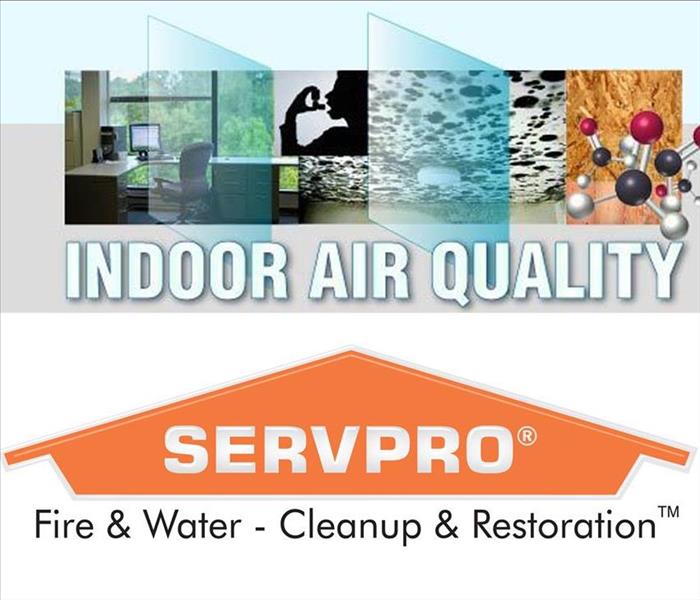Indoor Air Quality in Marion, Bond, Fayette & Clinton Counties
4/27/2018 (Permalink)
Indoor air quality/environmental professionals evaluate the quality of the air inside a structure. Some specialize and are skilled in testing buildings for the presence of molds. Using various testing devices, these professionals collect air and surface samples to compare the indoor mold spore count to the outdoor environment. If you have concerns about mold, SERVPRO of Marion, Bond, Fayeet, Clinton Counties can assist you in locating a qualified indoor air quality/environmental professional.
SERVPRO cares about proper restoration of your structure. In most water damage situations excessive mold growth is not a problem and SERVPRO can safely restore your building to preloss condition. The need to address the presence of mold can be determined by an on-site, indoor environmental inspection. Please keep in mind SERVPRO of Marion, Bond, Fayette, Clinton Counties does not interpret insurance policies or coverage; you must consult your insurance company to determine the scope of policy coverage.
Carbon Monoxide - The Silent Killer
4/19/2018 (Permalink)
The Silent Killer
You can't see or smell carbon monoxide, but, at high levels, it can kill a person in minutes. Often called the silent killer, carbon monoxide, or CO, is an invisible, odorless, colorless gas created when fuels (like gasoline, wood, coal, natural gas, and propane) burn incompletely.
According to the Center of Disease Control and Prevention (CDC) each year, more than 400 Americans die from unintentional CO poisoning. It is estimated another 20,000 visit the emergency room, and more than 4,000 are hospitalized due to CO poisoning. All people and animals are at risk for CO poisoning, with some groups— including unborn babies, infants, and people with chronic heart disease, anemia, or respiratory problems— being more susceptible to the effects of carbon monoxide.
An excess of CO, leading to CO poisoning, can result from faulty furnaces or other heating appliances, portable generators, water heaters, clothes dryers, or idling cars left running in garages.
Taking some basic, precautionary steps can help eliminate the risk of carbon monoxide poisoning. Protect yourself by reviewing the following tips, provided by the United States Fire Administration:
- Have fuel burning appliances, like oil and gas furnaces, gas or kerosene heaters, fireplaces, and wood stoves inspected by a trained professional every year.
- Open the damper for proper ventilation before using a fireplace. Never use your oven or stovetop to heat your home.
- Make sure all fuel-burning vented equipment is vented to the outside to avoid CO poisoning. Keep the venting for exhaust clear and unblocked.
- If you need to warm a vehicle, remove it from the garage immediately after starting it. Never run a vehicle or other fueled engine or motor indoors, even if garage doors are open. Make sure the exhaust pipe of a running vehicle is not blocked with snow, ice, or other materials.
- Make sure vents for the dryer, furnace, stove, and fireplace are clear of snow and other debris.
- Only use barbecue grills outside, away from all doors, windows, vents, and other building openings. Some grills can produce CO gas. Never use grills inside the home or the garage, even if the doors are open.
- Use portable generators outdoors in well-ventilated areas away from all doors, windows, vents, and other building openings to prevent exhaust fumes from entering the home or business.





 24/7 Emergency Service
24/7 Emergency Service

